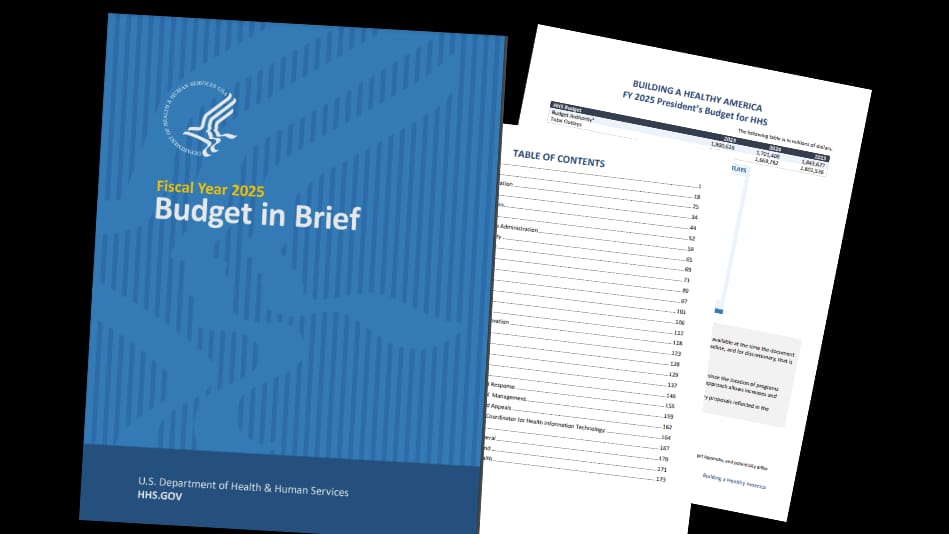Yesterday, I wrote about the State of the Union speech, noting that the Biden proposal to expand the number of medicines to face negotiations was weirdly meaningless (Biden wants 500 medicines price controlled in the next decade, even though there aren’t nearly that many drugs available to price control.)
But I mentioned that the president’s budget was about to hit and that while that document is strictly symbolic, it might provide a more detailed take on the SOTU ideas.
As they say here in the upper Midwest: “Yeah. Nope.”
The budget had even fewer details. There is nothing on changes to the price controls timeline, which is the real issue. (The budget only says that the president would start negotiations “sooner.”) STAT said that the topic came up at the HHS press briefing, and that administration officials wouldn’t give an answer.
This is all kind of bizarre. I mean, there is actual legislation out there that would amp up the IRA, so there are east-to-grab details if Biden’s folks wanted to crib off of something. So what gives? Three theories:
This is just abject laziness. The White House just hasn’t done the work, figuring that they’ll try to grab the political points now and worry about the details later.
Biden and HHS don’t think that they can effectively explain the mechanics — the when and how — to the average American, so they’re just leaving a blank space.
The administration knows that the IRA changes proposed by congressional Democrats would absolutely crush innovation, and they don’t want to cross a line that would create enough churn with patients, researchers, and doctors that the moral high ground is obscured. Now, I don’t think that this is a group that is playing 3D chess around health policy, but it’s a possibility.
At the end of the day, it’s probably good that Biden isn’t taking this process seriously, and I know it’s a naive look for me to be surprised by empty posturing by politicians. Still …
The other new budget stuff around pharmaceutical policy was mostly an expansion of existing IRA ideas, such as bringing $35 insulin to everyone and imposing a $2,000 out-of-pocket cap in commercial insurance.
These are applause lines masquerading as policy. The $2,000 OOP cap, in particular, shows a remarkable lack of appreciation for how the health care system works in this country. The government could absolutely demand that private insurers set that kind of limit on prescription drug payments, but everyone who has spent more than seven minutes thinking about our system knows what would happen: insurers would jack premiums and blame the government. Consumers would be pissed about higher prices and a lack of choice.
But, hey, the politics work.
Yesterday, Fierce wrote a great top 10 piece, charting the medicines due for generic competition this year.
Here’s a bold claim: the way that drugs go generic is one of the best parts of the U.S. health care system. Generic medicines generally see incredibly rapid uptake — the United States leads the world — at incredibly low prices. (Maybe too low, but that’s a topic for another day.)
Generic drugs form the backbone of our medical system, driving costs down over time for everything from cancer treatment to heart disease prevention. Nothing in medicine is as cost-effective as generics.
It’s a statement of the obvious, but the source of cheap generic medicines is the existence of higher-priced brand medicines that, over time, lose their exclusivity. Harm the innovation that brings us new drugs, and the growth in our stockpile of future generics gets impacted, too.
So celebrating innovation is important, but so is the acknowledgment of genericization. Peter Kolchinsky has suggested that we literally celebrate the loss of patent protection, proposing “patent-burning parties” where industry can draw awareness to the way that patients benefit throughout the life cycle of a molecule. (I’ve always thought that this would be a great stunt to host at J.P. Morgan. A BBQ and patent-burning party on Union Square? Sign me up.)
But in lieu of an actual shindig, we can at least note when medicines pass into the public domain, which is why I’m so happy Fierce illuminated the topic this week.
I feel like no one has all the details here, but Wegovy’s new indication in preventing cardiovascular outcomes should, in theory, allow Medicare to cover the obesity med. The CBO said as much in a note to Congress that was picked up by Endpoints and Politico. But I’m not sure how that happens. Seems like a big deal, and I suspect we’ll be hearing more.
As a society, we ought to be going out of our way to make it as easy as possible to get the best possible treatments for postpartum depression to new moms. That is apparently not happening: we have an incredible new tool in Zurzuvae, and hardly any insurers have policies on how it is to be covered, per an impressive new report that was covered by KFF Health News. Perhaps that can be chalked up to the standard gap between approval and coverage policies … but those that do have policies generally have ones that make the drug hard to get. We can do better.
If this email was forwarded to you, and you’d like to become a reader, click here to see back issues of Cost Curve and subscribe to the newsletter.





